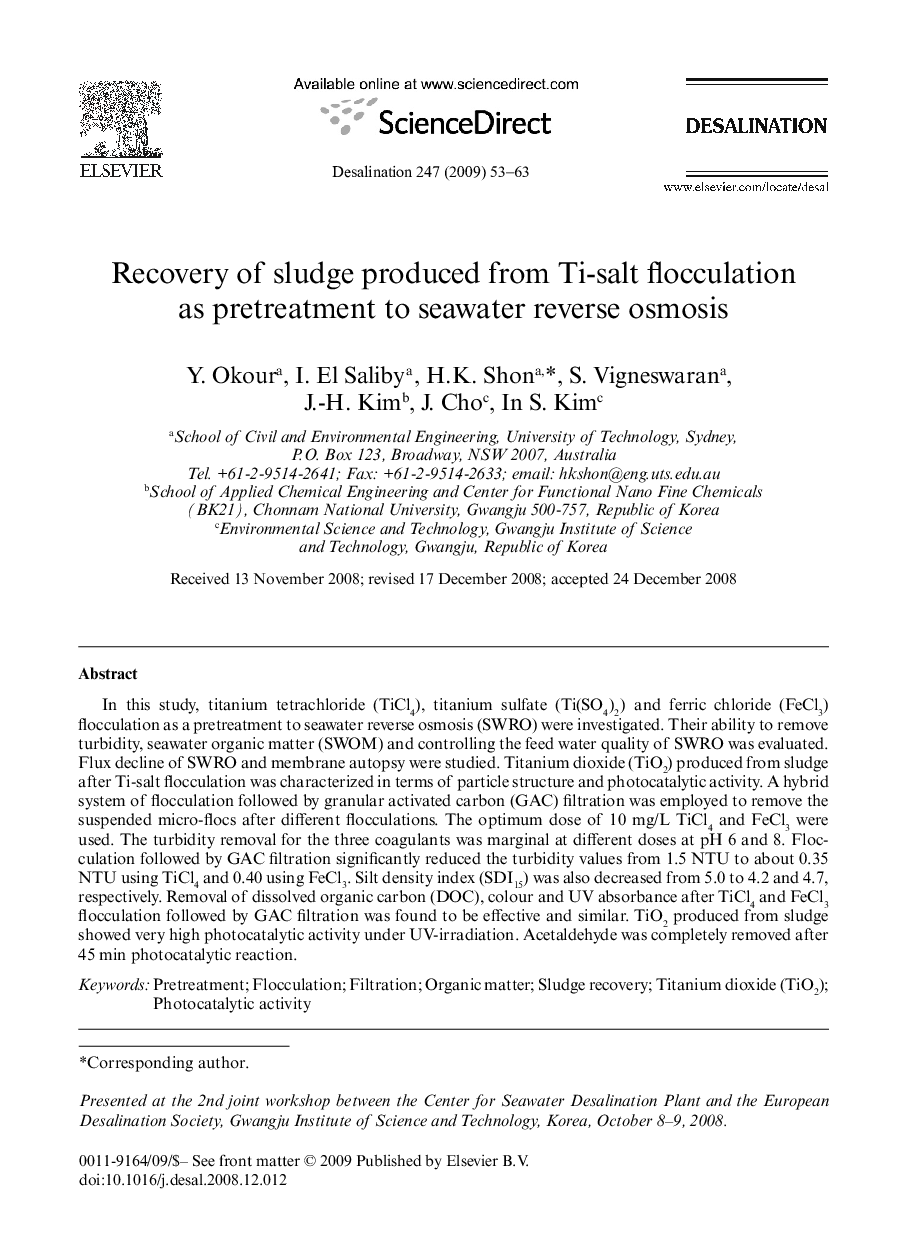| Article ID | Journal | Published Year | Pages | File Type |
|---|---|---|---|---|
| 626519 | Desalination | 2009 | 11 Pages |
In this study, titanium tetrachloride (TiCl4), titanium sulfate (Ti(SO4)2) and ferric chloride (FeCl3) flocculation as a pretreatment to seawater reverse osmosis (SWRO) were investigated. Their ability to remove turbidity, seawater organic matter (SWOM) and controlling the feed water quality of SWRO was evaluated. Flux decline of SWRO and membrane autopsy were studied. Titanium dioxide (TiO2) produced from sludge after Ti-salt fl occulation was characterized in terms of particle structure and photocatalytic activity. A hybrid system of fl occulation followed by granular activated carbon (GAC) filtration was employed to remove the suspended micro-flocs after diff erent fl occulations. The optimum dose of 10 mg/L TiCl4 and FeCl3 were used. The turbidity removal for the three coagulants was marginal at different doses at pH 6 and 8. Flocculation followed by GAC fi ltration signifi cantly reduced the turbidity values from 1.5 NTU to about 0.35 NTU using TiCl4 and 0.40 using FeCl3. Silt density index (SDI15) was also decreased from 5.0 to 4.2 and 4.7, respectively. Removal of dissolved organic carbon (DOC), colour and UV absorbance after TiCl4 and FeCl3 flocculation followed by GAC fi ltration was found to be eff ective and similar. TiO2 produced from sludge showed very high photocatalytic activity under UV-irradiation. Acetaldehyde was completely removed after 45 min photocatalytic reaction.
